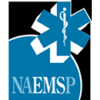This article originally appeared in the National Association of EMS Physicians blog and is reprinted here with permission.
By Maia Dorsett, MD PhD FAEMS, @maiadorsett
Article reviewed: Campos A, Ernest EV, Cash RE, Rivard MK, Panchal AR, Clemency BM, Crowe RP. (2021). The association of death notification and related training with burnout among emergency medical services professionals. “Prehospital Emergency Care,” 25(4), 539-548.
Background. Death notification is the process by which we inform family members or friends that someone they are close to has died. EMS professionals do this as part of their clinical roles – both in cases of obvious death and in cases of termination of resuscitation in the field. In the clinical sphere of prehospital care, the deaths that we deal with are often sudden and unexpected, which makes these conversations even more difficult.
It is known that the communication of bad news has been linked to psychological consequences such as depression, anxiety or PTSD amongst healthcare professionals. In medical school or other training paradigms, there is standardized training in delivering bad news. Such education has been shown to improve the ability of healthcare professionals to deliver such news with clarity and improve recipients’ understanding of the information.
Download a checklist
Dealing with death
Designating specific roles and other tips to make the hardest part of the job a bit easier
Despite the role of EMS professionals in delivering bad news, little is known regarding:
- The frequency with which EMS professional deliver death notifications
- The prevalence of training related to performing this task
- Whether an association exists between delivering death notification and burnout in EMS professionals
Therefore, this study had two objectives:
- Describe EMS professionals’ experience with death notification and related training
- Assess the associations between death notification delivery, training, and burnout
Methods. This was a cross-sectional study of data obtained via electronic survey administered to a randomly selected cohort of national-certified EMS professionals at the BLS and ALS level. An e-mail invitation that included the unique survey link was sent out in April 2017. EMS professionals who took the survey were not made aware of the study objectives.
Respondents were asked to self-report the number of death notifications they had made for patients age > 18 in the preceding 12 months. They were also asked whether they had received any form of death notification training during their initial and continued EMS education and their level of comfort in performing death notification. Burnout was assessed using the Copenhagen Burnout Inventory, which has previously been validated for use with EMS professionals.
Key results. The survey was sent to 19,330 EMS professionals and they had 2,333 responses. After accounting for exclusion criteria (e.g. not a care provider, military EMS, practicing at EMR level etc.), 1,514 responses were included in the analysis. 55% of the survey respondents operated at the BLS level and 45% operated at the ALS level.
They found that experience in delivering death notification varied by certification level – 77% of ALS respondents reported delivering at least one adult death notification in the previous 12 months, compared to 33% of BLS respondents. Only half of all EMS clinicians reported receiving death notification training as part of their initial education, which did not vary between BLS and ALS clinicians. Most commonly, this training took the form of classroom lecture and classroom discussion.
As one might expect, respondents attitudes toward delivering death notification correlated with their past training experience, with them feeling significantly more prepared if they had received prior training. Interestingly, after using a multivariable regression model to control for known confounders, delivering death notification was associated with work-related burnout amongst EMS professionals. Compared with EMS professionals who had not delivered any death notifications, EMS professionals who had delivered 1-5 in the previous 12 months had a 36% greater odds of burnout and those who had delivered > 5 demonstrated 73% greater odds of burnout. Importantly, ongoing education appeared to make a difference: death notification training as part of ongoing education was associated with a 29% reduction in the odds of burnout. Interestingly, the same was not true regarding death notification training as part of an initial EMS education program.
There are some potential confounders here that are worth considering. Systems with more death notification may be busier systems with other factors that correlate with burnout other than call volume alone which was accounted for by the regression model. EMS agencies that do continuing education on this subject may have a different cultures. Exposure to death and tragedy may drive burnout. However, the correlation between continuing death notification training and a reduction in burnout is not explained well by these confounders and suggests that it is not just exposure to death that drives burnout, but that preparation to communicate with families plays a role as well.
What does this mean for EMS leaders and educators?
This study demonstrates three important things:
- Death notification takes an emotional toll on EMS clinicians
- Death notification is not the purview of ALS clinicians alone
- Continuing education in death notification may be an important factor not only in preparing EMS clinicians to communicate more clearly during these difficult conversations, but potentially mitigating the risk of burnout as a result
As EMS leaders and educators, we should ask ourselves whether we offering this training to our clinicians and what should this training look like? There is no clear right answer here, but ignoring the need is definitely the wrong one.
Some ideas:
Teach and implement the GRIEV_ING algorithm and use simulation to practice and provide feedback - not every cardiac arrest ends in save in real life, do your simulations reflect this?
Learn more
EMS Burnout Repair Kit
Reignite your EMS passion
Additional resources:
- GRIEV_ING algorithm paper
- This video was made by the Monroe-Livingston EMS Region at the beginning of the COVID-19 pandemic in anticipation of the rise of out-of-hospital death.
















